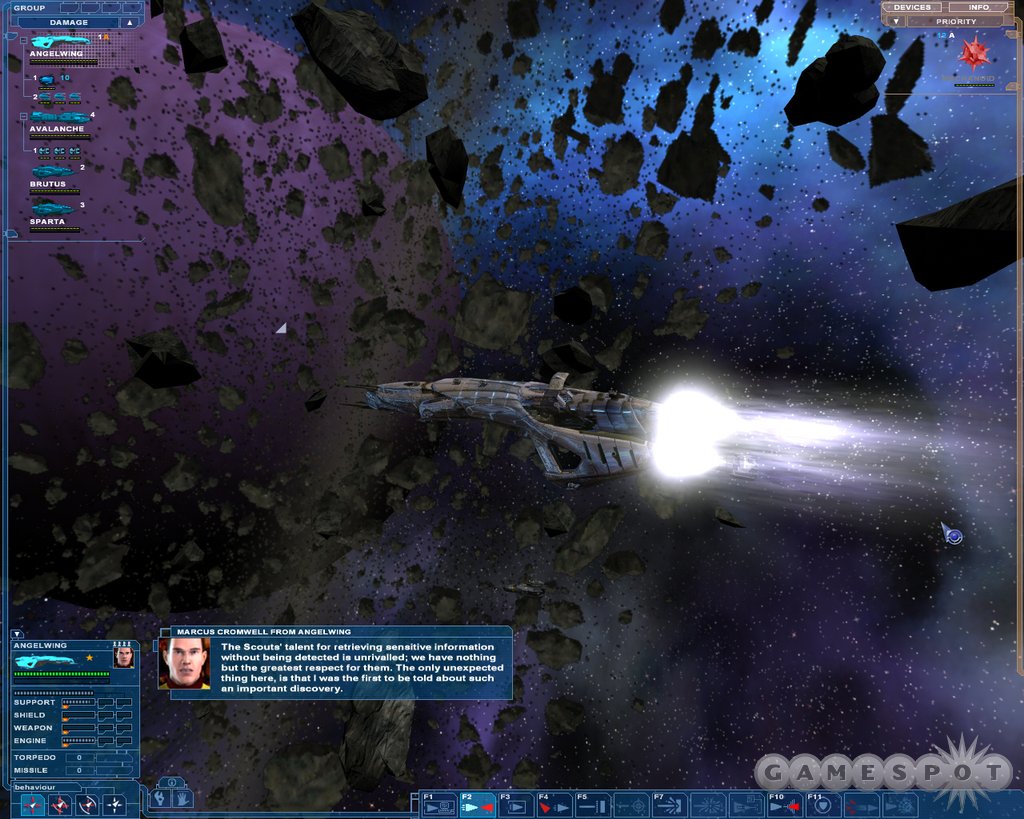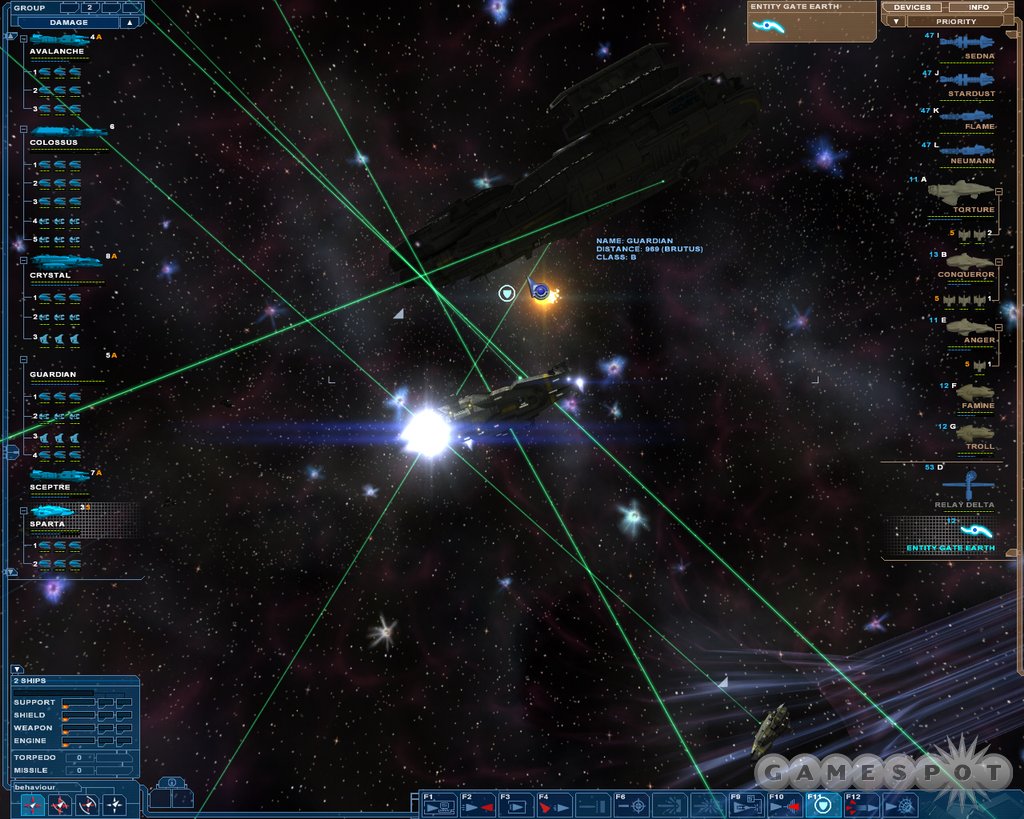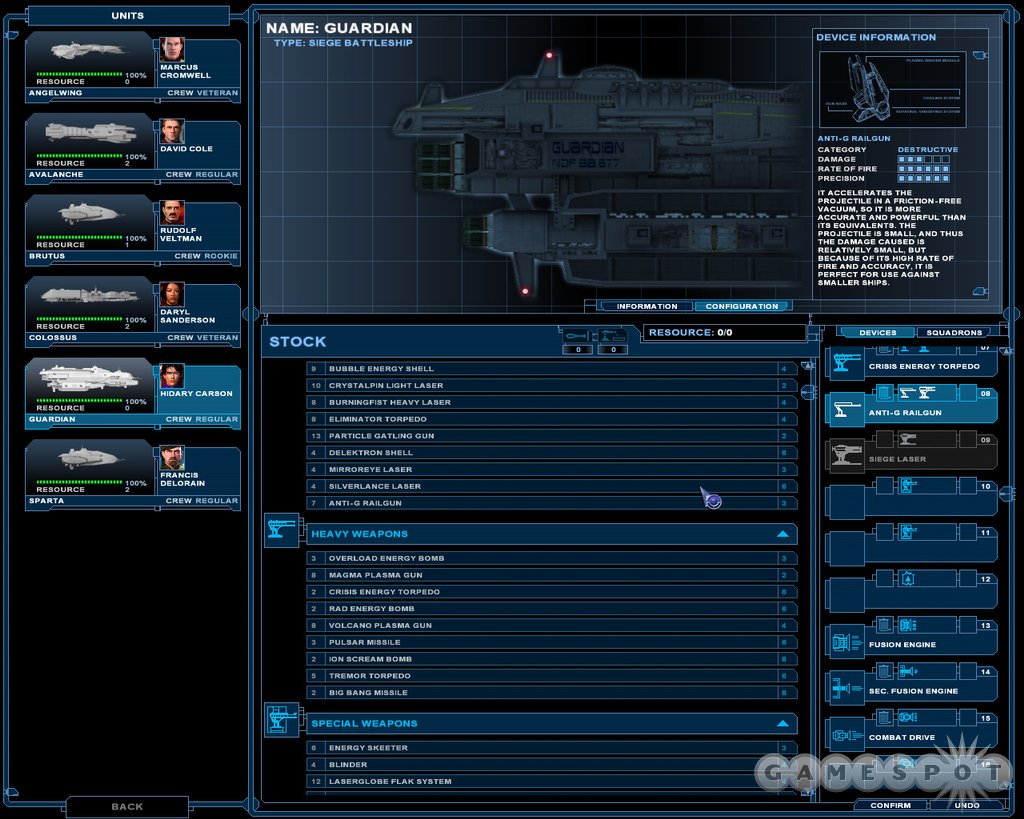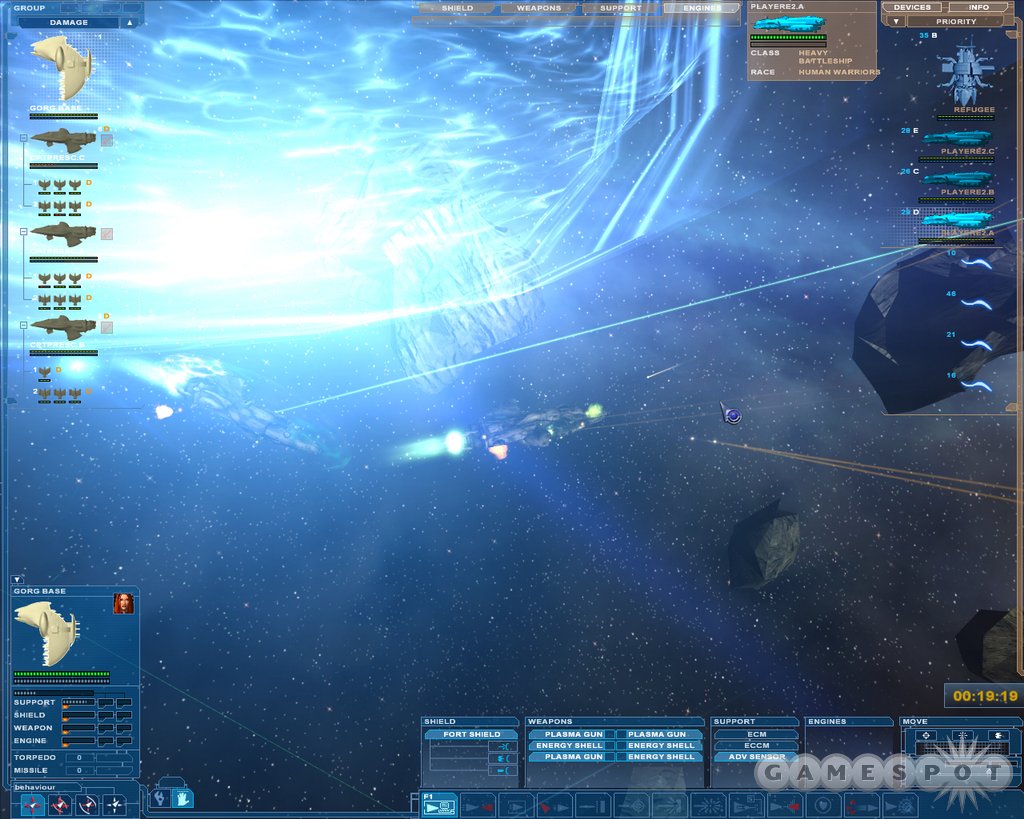Fans of the space game genre haven't had much to cheer about in recent years, but Nexus: The Jupiter Incident is a game that any self-respecting space game fan needs to play. This gem of a space tactics offering is everything that fans of the genre have been waiting for, as it takes gorgeous, next-generation graphical technology and applies it to an exciting game about starship combat, rogue artificial intelligences, galaxy-spanning wormholes, and more.

In Nexus, you play as Marcus Cromwell, an already legendary figure employed by SpaceTech, one of the megacorporations that's colonized the galaxy. Put in charge of the frigate Stiletto, you must patrol the far corners of the solar system while on the lookout for rival corporations. However, that's just the tip of the iceberg regarding the plot, because before you know it, you'll be sucked into a galaxy-wide war between alien races and a lost remnant of humanity.
At first, Nexus looks a bit like Homeworld and Homeworld II in that you control a starship or a fleet of starships in interstellar combat. However, the key difference is that Nexus isn't a real-time strategy game, so there are no resources to gather or units to build, much like there are in the Homeworld games. That lets Nexus focus on its strength, which is starship combat that looks so good it's literally cinematic in nature...from the way your shields glow when they absorb an incoming energy beam to the manner in which a ship's thrusters fire to swing it about.
The control scheme is elegantly simple, once you figure it out, but that masks some of the game's depth. To move or attack, simply select the ship you want, click on the corresponding action icon, and then select your target. You'll then watch as your ship fires its thrusters to accomplish the task. Using this control scheme, you can control a small fleet of ships and their accompanying fighters and bombers easily. The game lets you pause at any time to issue orders or to simply swivel and zoom the camera around to soak in the view.
There's quite a bit of tactical depth in missions, depending on your ship's loadout. If you're armed with shield-draining devices, you can try to knock down an enemy's shield and then switch to hull-battering weapons to finish him or her off. Or, if you have disabling weapons, you can target specific components on a ship. That way, you can take out a ship's weapons, its shields, its engines, and more. This is particularly helpful if you need to dispatch a boarding party of commandos to search a vessel. Or, if you have a complement of fighters and gunboats on board, you can launch them to protect your ship by targeting incoming fighters and missiles, or you can have them assist you in taking down a target. There's a wealth of options at your disposal, and when you multiply the number of ships in a battle, the action becomes even more cinematic to behold.
You also have a fair bit of energy management to think about, as all those weapons, shields, and devices require a lot of power. Part of your job is to manage your ship's power, and you can boost it to different systems, such as those for shields and weapons, at the cost of draining your energy reserves. This is simply done by clicking on the various settings in the energy panel. And if you're even more of a hands-on player, you have the ability to manually tinker to a greater detail by opening up the ship's systems panel and moving sliders about, though you can easily make it through the game without doing so.

Though the 15-to-20-hour campaign is presented as a linear story, it does offer some strategic depth between missions. You can outfit your ship with the latest weapons and devices; however, you'll be limited by the number of resource points available to you. This means that you'll weigh the trade-off between arming yourself with, say, shield-draining devices and device-disabling devices. The former is useful in a no-holds-barred battle, while the latter can be used to cripple and disable ships that you may need to seize. If anything, it's hard to know what you'll need until you play the mission at least once to see what you're up against. As a result, it would be helpful if the game would give you more of a clue as to what to expect beforehand.
A smattering of role-playing elements are found in Nexus as well. As you progress through the campaign, you and your crews gain experience. And if you accomplish secondary objectives, you'll gain experience faster. Every now and then, you can upgrade one of your character's three main attributes: combat, engineering, and science. Combat makes your ship more effective in battle, whereas engineering gives you more resource points between battles. Meanwhile, science lets you both scan objects faster and detect enemies further.

Part of the fun of going through the story is watching your ships become more powerful. When you're in command of the Stiletto at the beginning of the game, you're at the controls of a ship you feel humans could probably construct in a hundred years or so. However, once the plot takes off, you find yourself taking command of the Angelwing, an alien vessel with the capabilities of a Star Trek series craft. The differences between the Stiletto and the Angelwing are like night and day, and they have effects on gameplay. At first, ship combat is almost stately and ponderous, almost like Master and Commander in space. But by the end of the game, the combat is almost frantic, as you try to keep up in huge battles against wickedly powerful foes armed with weapons you could only dream about earlier.
Mission design is where Nexus stumbles a bit. There's a wide variety of missions, ranging from stealth ones where you have to sneak up on a target, to knock-down, drag-out battle royals between a dozen ships. The stealth missions are where you'll more than likely encounter some frustration, as their general slow pace and stringent mission requirements will probably mandate that you play them over and over until you can figure them out. A particularly difficult level involves you having to navigate your ship through a gigantic asteroid cloud full of enemy sensors and patrols. You do have a cloaking device. However, it can only be used for a few minutes at a time before it must be recharged...and it won't help you if an enemy gets too close. This mission is difficult enough to make you pull your hair out. There are other missions where it's just simply a matter of playing and replaying them until you figure out what you're supposed to do. You can save the game during a mission, but this often causes the mission to crash, so it's not something we recommend.
The multiplayer mode is fairly simple but also quite enjoyable, assuming you can find opponents online. Nexus ships with the standard deathmatch and team deathmatch modes, along with the ability to create a custom skirmish game. Depending on the server settings, each player can control a small flotilla of ships, and the goal can be to get the most kills, get the most points, or be the last person standing. However, the real challenge is trying to find opponents, as there are only a handful of servers up at any given moment, because the game just doesn't have that large an audience.

In terms of visuals, Nexus is easily the best-looking space game to date, and it's arguably one of the better-looking games of the year thus far. It's a sumptuous graphical experience thanks to the advanced Black Sun graphics engine. The game takes advantage of the latest DirectX 9 graphical effects (you can force it to use DirectX 8.1 features if you have an older video card), and it looks good enough that you'll want to show it off to all your friends. The sound and voice acting are also well done, though they're not quite as attention-grabbing as the graphics. Still, they complement the action onscreen very nicely.
Nexus isn't perfect, but it's probably as close as space games are going to get for the forseeable future, simply because the genre isn't what it used to be. Still, this is a game that will whet the appetite of any sci-fi fan, as it depicts battles that were previously the domain of television and motion pictures.